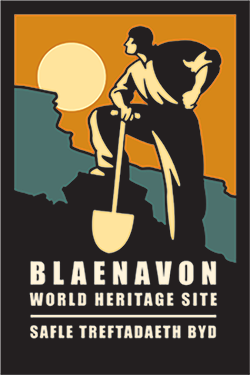Industry And Trade
HINT: Click or tap on a point of interest to find out more about that attraction. Click or tap again to close. To load another map or location, please select a category from the menu to show hotspots for that category.
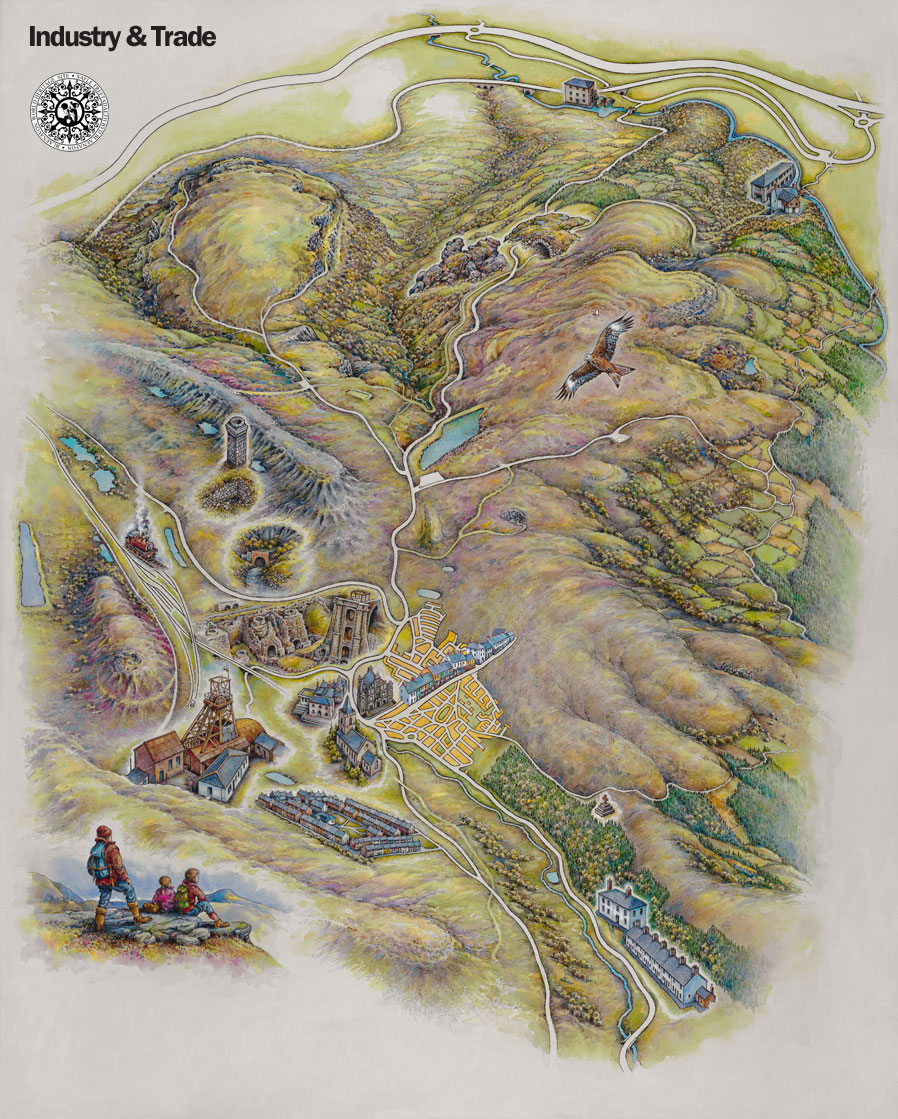

GOVILON WHARF
Govilon Wharf linked Blaenavon to the Brecknock and Abergavenny Canal and then to Newport and beyond. Canals were needed in order to transport heavy industry products like Pig Iron, Coal and Limestone. Govilon Wharf opened in 1805 and was planned jointly with tramroads. Canals and tramroads were so important to each other that the first work carried out by the new Brecknock & Abergavenny Canal Company in 1794 was to build a tramroad.
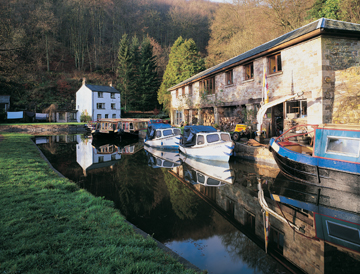
LLANFOIST WHARF
Llanfoist wharf linked Blaenavon to the rest of the world by the Monmouthshire and Brecon canal. Canals were needed in order to transport heavy industry products like Pig Iron, Coal and Limestone. Llanfoist has a large warehouse alongside its wharf, which would have stored these products. The wharf was linked by a steep incline to the Hills tramroad which skirts around the Blorenge mountain to Pwll Du. Here the tramroad cuts through the mountain to the ironworks at Blaenavon. A later incline was constructed over the mountain.
.jpg)
BRECKNOCK AND ABERGAVENNY CANAL
The Brecknock and Abergavenny Canal was built between 1792 and 1812 to transport coal, iron, steel and other raw materials around the UK. The basin at Llanfoist was a terminus for Hill’s tramroad, a primitive railway, which brought products from Blaenavon for transportation on the canals. Canals were a major form of industrial transportation in the 18th and 19th centuries. The prospect of new canal routes almost certainly influenced Ironmasters Thomas Hill, Thomas Hopkins, and Benjamin Pratt. to build the ironworks at Blaenavon.

TYLA QUARRY
Tyla Quarry is a limestone quarry. The area of Blaenavon has a lot of raw limestone, which is important because limestone is one of the most important raw materials for the Iron industry and because of this lots of quarries, like Tyla were opened. Tyla quarries were large and extensive and one of the main sources of limestone for Blaenavon Ironworks, although it also supplied Garn Ddyrys Forge. It used the Pwll-Du tunnel to transport its material. It was open until the 1920’s.
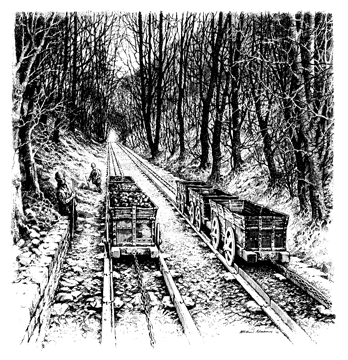
LLANVIHANGEL TRAMROAD
Llanvihangel tramroad initially ran from Llanfoist to Llanvihangel Crucorney. In 1818 it was extended to Govilon Wharf and to Grosmont. The terminus at Govilon stretched as far as the Chapel yard. Excavations here uncovered rails and sleepers although, as the Chapel pre-dated the tramroad, the use of the yard is unknown. These extensions meant that the tramway connected to other tramways running from Grosmont to Llangua, and Llangua to Hereford. This provided haulage of coal and other products to and from Hereford.
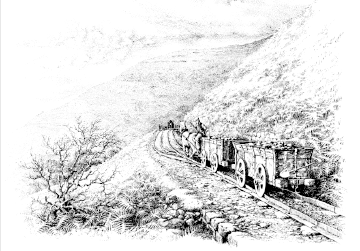
HILLS TRAM ROAD
Hills Tramroad was an early primitive horse drawn railway built by Thomas Hill to improve transportation links for the industry. Built in 1812, the tramroad demonstrates early technological developments and changes in transportation. It’s creation helped the Blaenavon Iron industry become world leaders by establishing a link with the Brecknock and Abergavenny Canal where iron and limestone could be transported around the UK and World and also opened up links with the new forge at Garn Ddyrys.
PWLL-DU QUARRY
Pwll-Du is a limestone quarry, which was opened around 1819 in response to the increased need for limestone from Blaenavon Ironworks. Limestone is one of the most important raw materials for the iron industry. One of the most important features at Pwll-Du is a water balance lift, which raised wagons full of limestone from the quarry floor to the tram road for transportation. The Pwll-Du quarry is very well preserved and therefore a Scheduled Ancient Monument.
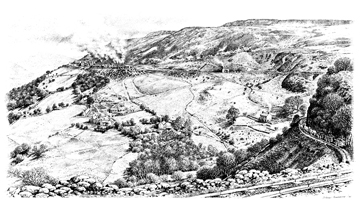
GARN DDYRYS FORGE
Garn Ddyrys Forge, built by Thomas Hill, started production in 1817 and converted pig iron to wrought iron. A tram road known as “hills tramroad” was built around the same time to link the forge to Brecon and Abergavenny. Once the steam railway reached Blaenavon in 1854, Garn Ddyrys became very isolated. It closed in 1860, when a new forge, known as Forge Side, was built at Blaenavon. Garn Ddyrys is now a Scheduled Ancient Monument, as, archaeologically, it is one of the most completely preserved example of an early 19th century forge.
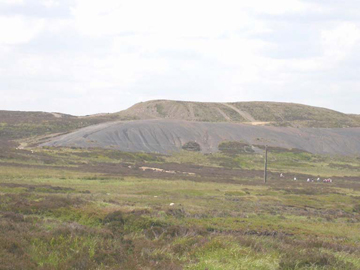
CANADA TIPS
In the 1940, throughout the Second World War, open cast mining began in the Blaenavon; you can see the spoil heaps all around the landscape. By 1944, 5% of all coal for the war effort was produced in Blaenavon. The early development of open cast mining, a technique not used in the UK before the war, was helped by troops from Canada based in Britain, bringing their expertise and equipment; hence the name of the spoil heaps “Canada tips”.
.jpg)
KEEPER'S POND
The Keeper’s Pond, also known as Pen-ffordd-goch Pond or the Forge Pond, is situated near Pwll-Du, on the hill above Blaenavon. The pond was built in the early 19th century to provide water for Garn Ddyrys Forge. It acquired the name Keeper’s Pond because the gamekeeper of the grouse moors lived in a cottage nearby. Today it is a local beauty spot and an ideal pace to start a walk on the Blorenge Mountain.

DYNE-STEEL INCLINE
Dyne-Steel Incline is a scheduled Ancient Monument. Constructed in 1850 by Thomas Dyne-Steel, the a steam powered double inclined tram road connected Blaenavon Ironworks and Garn Ddyrys Forge, replaced a horse drawn tram road through Pwll-Du Tunnel, which once formed part of the route. The new route provided a quicker and more cost effective way of transportation allowing more growth of industry. You can see this feature as part of the Iron Mountain Trail.
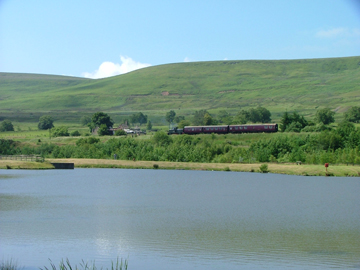
GARN LAKES
Garn Lakes used to be an area covered in spoil tips and old colliery workings but following an extensive land reclamation scheme it was officially opened in 1997 as a beautiful area for residents and visitors. It covers 40 hectares, and with lakes and grasslands it provides a diverse habitat and breeding grounds for a wide range of wildlife. So much so, that it has now been designated as a Local Nature Reserve.

HILL PITS
Hill Pits are mines that were sunk in 1830’s by Thomas Hill and Son to extract Iron Ore and Coal for Blaenavon Ironworks. There was a direct tram road link between Hill Pits and Blaenavon Ironworks to transport raw materials. The Mine was in operation from 1844 – 1893. At Hill Pits today you can still see the preserved chimney, which served a winding steam engine to twin shafts.
HILL PITS
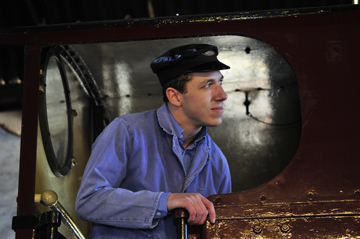
PONTYPOOL & BLAENAVON RAILWAY
The line from Brynmawr to Blaenavon was originally built in 1866 to transport coal to the Midlands and in 1878 was extended to Abersychan and Talywain. The line was closed to passengers in 1941 and to goods in 1964, though the section from Blaenavon to Pontypool was in use for coal from Big Pit and other local mines until 1980. Today you can visit the line and ride on the steam engine at Pontypool and Blaenavon Railway.

PWLL DU TUNNEL
Pwll Du is a limestone quarry, which was opened around 1819 in response to the increased need for limestone from Blaenavon Ironworks. Limestone is one of the most important raw materials for the iron industry. One of the most important features at Pwll Du is a water balance lift, which raised wagons full of limestone from the quarry floor to the tram road for transportation. The Pwll Du quarry is very well preserved and therefore a Scheduled Ancient Monument.
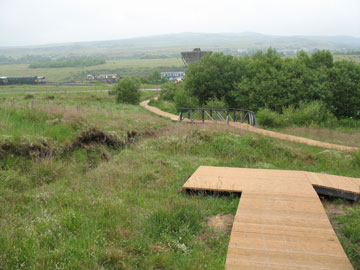
COITY TIP
The Coity Tip, a tip of mining waste was created during the working life of Big Pit and its predecessor the Coity Pit, which was primarily an ironstone mine. Tips such as these were once a familiar site in industrial communities where waste rock and shale from the mining process was discarded on the surface, altering the landscape and environment forever. When the tipping stopped, nature began to gradually reclaim the tip and surrounding area, which is now rich with plant and animal species.
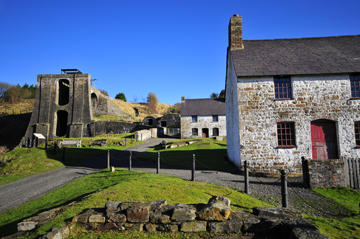
BLAENAVON IRONWORKS
Blaenavon Ironworks is the most important feature of the World Heritage Site and is now a Scheduled Ancient Monument. The ironworks was opened 1789 by the Ironmasters Thomas Hill, Thomas Hopkins, and Benjamin Pratt. During the early 19th century it was one of the most important producers of iron in the world. Today, it is the best preserved blast furnace complex of its period and type in the world and is one of the most important monuments to have survived from the early part of the industrial revolution.
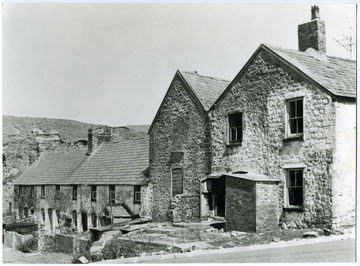
STACK SQUARE AND ENGINE ROW
Stack Square and Engine Row are a set of small stone cottages built in the 1780’s to house the skilled furnace workers from Blaenavon Ironworks. The houses would have encouraged skilled migrants to come and work at the new Ironworks, like Timothy McCarthy. The square included the manager’s house, the company shop, and office. Today they are a Scheduled Ancient Monument and have been restored by CADW for visitors to walk around. In 2007/8 they featured in the popular BBC Coal House television series.
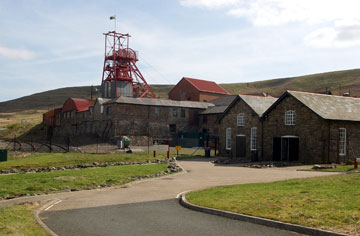
BIG PIT: NATIONAL COAL MUSEUM
Big Pit opened in 1860 and mined coal. Coal was the lifeblood of the industrial revolution. It was used to make Iron and steel and fuelled ships, locomotives and steam engines. During the 19th and 20th centuries, Big Pit was one of many collieries working in Blaenavon, and together they produced enough coal to make South Wales the world’s leader in coal production! When the pit closed in 1980 it was the oldest operating coal mine in South Wales. Today, as the National Coal Museum of Wales, it is famous for its museum and underground tour that lets you see what life was like at the coalface!

DONCASTERS
Doncaster's Group Ltd was originally founded in 1778, when Daniel Doncaster established an operation in Sheffield, England to apply the crucible steel-making process to the manufacture of hand tools and is now one of the longest continuously operating industrial manufacturing companies in the world. Doncaster's Blaenavon was established in the 1950’s and remains an active industrial site in Forge Side. Manufacturers of forged rings, casings, blades and discs for the aerospace, industrial gas turbine and specialized engineering industries.

AARON BRUTE'S BRIDGE AND LEVEL
Arron Brute’s Bridge has recently been restored to its former glory. A Scheduled Ancient Monument, it is one of the earliest examples in the world of a cast Iron bridge, built in 1812. It is known as ‘Arron Brute’s Bridge’, because Arron Brute was the manager of the local mine when it was built, and an influential man. You can see his cottage next to the bridge, which is still lived in today.

VARTEG
Varteg Ironworks opened in the early 1800’s on land let by Thomas Hill and Thomas Hopkins. The lower Varteg incline was constructed around 1803 to transport trams of pig iron from the Varteg ironworks to Cwmavon Forge. It was then passed to the Monmouthshire and Brecon Canal to be transported around the UK and abroad. Varteg colliery opened in 1860 as a coal and iron mine and In 1861 the tram line was extended as well.
Main Attractions
See what Blaenavon has to offer, explore the local history and find things to do.
Trails
Why not explore Blaenavon and surrounding areas by foot? Take a look at our short walks.
Industry And Trade
Find all about Blaenavon and explore the former mining pits or visit the ironworks.
Social Life
Have a look around the main town area, explore its shops and meet the friendly locals.
Landform and Wildlife
Take a visit to the many natural features around Blaenavon.
